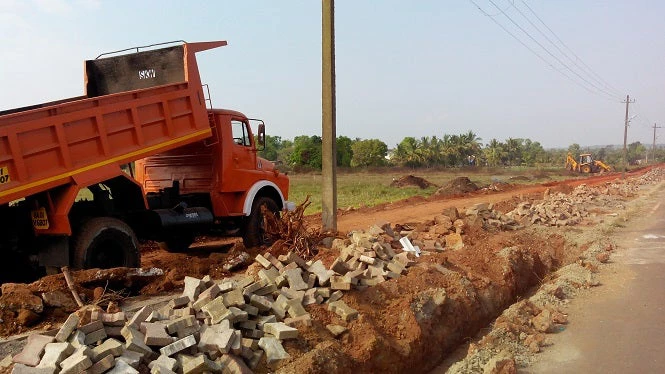
For that reason, our interventions often have a dual goal: supporting high quality infrastructure, and, at the same time, supporting institutions’ efforts to modernize and become more efficient. That institutional development sometimes comes in the form of stand-alone project components that focus on modernizing processes, governance, and skills. But in other cases, infrastructure investment projects can also provide opportunities to initiate important institutional changes.
This is often the case with civil works contracts, and the Tamil Nadu State Road Sector project in India is illustrative of how contracting strategies implemented with Bank support helped a highway agency enhance its implementation capacity, the efficiency of its expenditure, quality of infrastructure, and system sustainability through significantly improved asset management.
Baseline: Low budget allocations; input-based contracts that place all risk and outcome responsibilities on the agency.
Circa 2000, the state’s highways department was managing a 18,375-km primary highway network. The average annual expenditure of $108 million covered less than 65% of the maintenance needs and left little for capacity expansion.
Contracts were oriented on specifying inputs that the contractor would provide based on the designs prepared by the agency. In the case of maintenance contracts, the agency typically provided plant & equipment and materials and specified labor requirements that contractors would provide. Works were carried out via traditional item-rate contracts where the agency specified a detailed bill-of-quantities and asked contractors to bid on those inputs; based on a detailed design and materials/labor estimate. The agency held all the risks related to change in actual quantities of materials used as well as any design changes.
Even as recently as 2011-12, $ 310 million was spent on upgrading thinly across 2,675 contracts and, nearly $76 million was spent on maintenance through 2,672 contracts! This highly-fragmented approach resulted in rapid road degradation and constant maintenance. These small-value item-rate contracts led to high transaction costs, offered limited scope for harnessing economies of scale/technology, and resulted in time and cost overruns. The improved/maintained stretches of highways were also of inferior quality as good construction equipment could not be deployed because of small sizes of the contracts. This approach also increased the workload of staff of the HD in terms of procuring, supervising and managing numerous contracts and the expenditure made little impact
Increment 1. Getting to scale – increased budget allocations and contract size.
The first road sector project encouraged the government to address the above issues resulting in a progressive increase in budget allocations and complete outsourcing of the maintenance works. It demonstrated the benefits of better project preparation, secured funding and large-size contracts.
A small Project Implementation Unit of the agency successfully implemented a $507 million program and upgraded 724 km of state highways through ICB contracts of size ranging from $50 to 150 million and covering 100 to 400 km and maintenance of another about 1,300 km of highways. The quality of these highways and, equally importantly, the improvement of an entire strategic corridor of 700 km were clearly perceptible and widely appreciated by all the stakeholders.
Increment 2. Contracting specifying outputs based on functional specifications and clubbed with longer maintenance period.
The second road sector project introduced Engineering Procurement Construction (EPC-lumpsum with 5-year performance-based maintenance post construction) contracts to upgrade 435 km of highways.
For these contracts, the agency specifies the output required, consistent with the country’s design guidelines. Contractors need more capacity and working capital to produce and implement an efficient design. The role of the agency starts evolving to that of a manager of quality and product. In this contracting modality, design risk is transferred to the contractor and thereby making it responsible for quality of construction, maintenance, and management of assets.
Another feature is that the agency’s transaction costs are significantly reduced, as there is no longer a need to do much of the detailing, measurement, and preparation of bills for various items of works.
The results so far of implementation of these works contracts have been encouraging. Almost all contracts are progressing well ahead of or as per schedule and nearing completion with no cost overruns.
Increment 3. Contracts specifying outcomes (Performance-based contracts) and innovations in financing (PPP).
The second road sector project further adopted better contracting approaches that encourage economies of scale, offer stronger incentives for performance, and bolster implementation capacity through harnessing the services of the private sector (e.g., Annity-based Build-Operate-Transfer and long-term Performance-Based Maintenance Contracts).
These are being implemented in several administrative blocks of the state so that several staff of the Highways Department receive hands-on experience. The performance-based maintenance contracts ensured that:
- Maintenance interventions are thoroughly planned and implemented at the right time
- Pavement failures such as ruts, cracks, and potholes are addressed in a time-bound manner
- Monitoring of performance is carried out regularly on scientific basis
- Emergencies are addressed immediately
- Payments are made for providing a quality asset.


Join the Conversation